Wednesday, November 5
Laugavegur, the main street of downtown Reykjavik, is a long artery vibrating with action during the festival. It overflows with gift shops, pathways to a Rainbow Street full of tourists and record stores that double as DIY venues, 10/11 convenience stores, and the Icelandic Punk Museum. “It’s just some weirdo in a basement and it hasn’t been open that long, but he got Johnny Rotten to do the grand opening,” one of the festival organizers tells me over a drink at Bingo. Sounds pretty punk to me.
The bar is sweet and intimate in an unforced way, something about the cold forcing us all to come together. Before leaving I meet José Luis Anderson, who makes folk music in Spanish and Icelandic as Andervel. The first musician on the official Iceland Airwaves lineup being more on the gentle end of the sonic spectrum gets me thinking about all I really know about this place: the old-school punk, the experimental electropop, and the post-rock that made it out. It makes me eager to explore what’s bubbling locally.
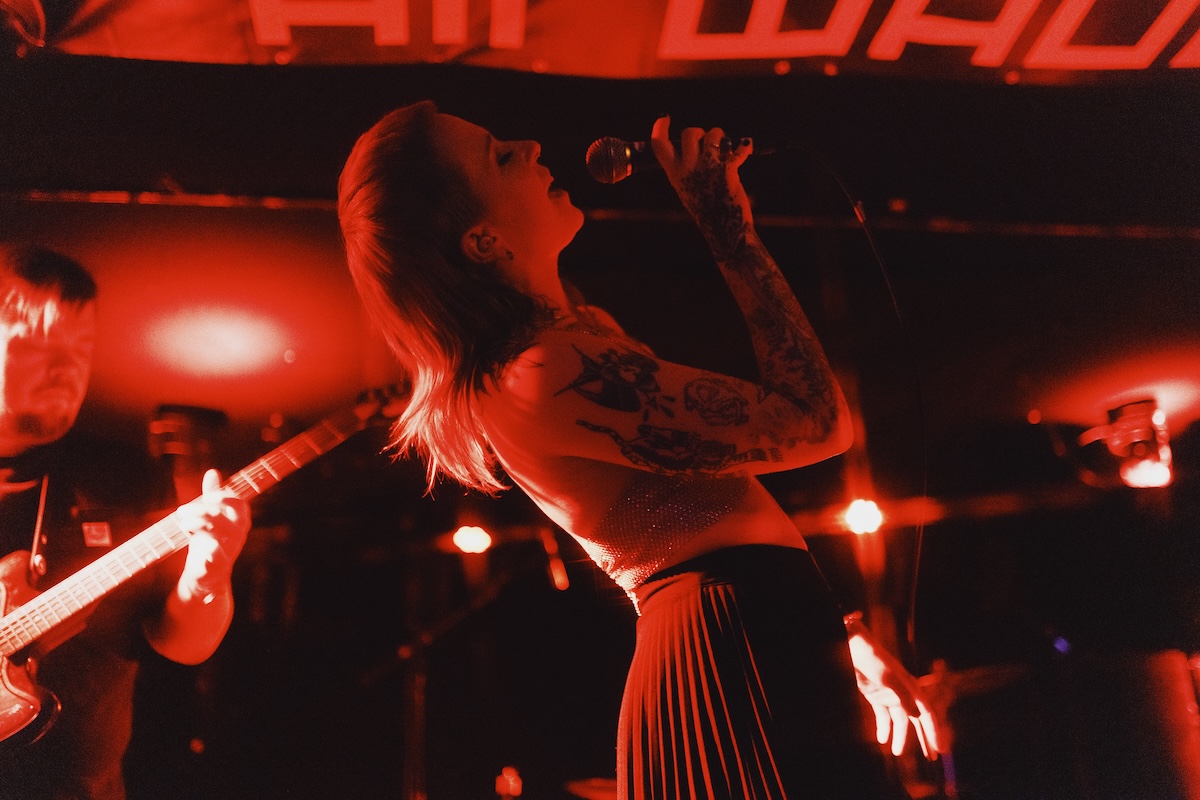
(Credit: Martyna Sumislawska)
Thursday, November 6
The conference is underway: panels on “keeping it weird yet global,” an artist named Rakel everyone has their eye on, and Björk, very casually in the audience for a panel on creativity. The sun sets early
After a drink with two other journalists and Björk’s alleged cousin, a sailor with a firm handshake—“Icelanders, we are no bullshit; we want to work for the money, have a good drink, have a good time,” he says downing his beer—we head to Fríkirkjan, a Lutheran church-turned venue for the weekend. We’re greeted by Ólöf Arnalds, a voice as gentle as it is soaring. Accompanied only by a guitar, Arnalds’ lilt echoes off the church walls, watched over by a mosaic of Jesus and a Palestinian flag hanging off the speaker next to her. This sweet start is fitting, an echo of what Andervel told me yesterday.
After church, we head upstairs to the bar, Gaukurinn, where Knackered is making the floor shake, jumping around to gnashing electronica and thumping bass and occasionally striking a mock ballet pose, arms forming a heart on her head. Another journalist tells me Knackered worked as a ballet composer then went rogue to create thrashing, fun-as-hell underground club music in the vein of SOPHIE or A.G. Cook.
The smoking area fills with laughter after her set, and soon the room is riled up by the raucous femme-punk guitar antics of Panic Shack. The heirs apparent of Icelandic punk’s storied history got a full room near bursting with moshing, jumping, and intensely energetic guitar. Between the electronic beats and the guitar, I forget the cold.
Nearby, Andervel soothes Bird, a comparatively chill bar, with exactly what he promised me when we met. The audience sways, drink in hand, to a collection of tender bilingual acoustic songs in Icelandic and Spanish, with co-vocalist Sigurlaug Thorarensen harmonizing to heaven as José Luis pays tribute to his grandmother. The first night comes to a close, and the crowd sways together, huddling for warmth.
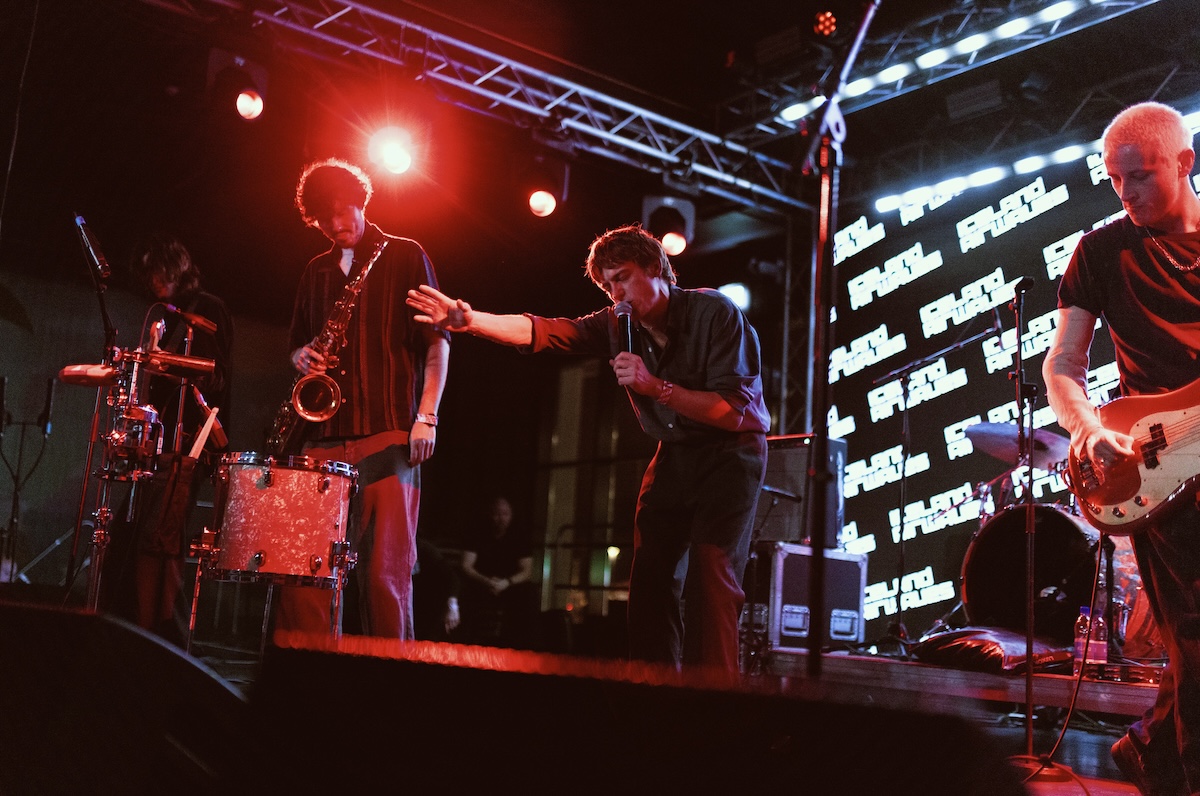
Friday, November 7
In one day, all of us have made 20,000 steps. We’re taken to a morning dip at the Sky Lagoon, which involves a natural hot spring, a giant infinity pool, dry and wet saunas, and a direct view of what looks like a sprawling farmhouse. I’m later told it is the presidential residence. “Icelanders really felt this was the most elegant place for our president to live,” one of the organizers jokes. It looks pretty heavenly, honestly. I rub my skin, smooth from the seven-step Skjól ritual that involved a scrub and a shot of crowberry elixir.
Rejuvenated and after a quick change, I am guided over to Smekkleysa for a chat with Siggi Baldursson, advisor of Iceland Music and former drummer of the Sugarcubes, the legendary Icelandic rock group where Björk got her start. The head organizer taking me around is similarly abuzz, relaxed, and back in the action after a restful morning. “My girlfriend just told me she planned a show tonight in our living room…and I’m like, really? On top of everything else happening? And I said fuck it, let’s do it.” It’s 2:00 pm. Official programming starts at 6:00 pm. I’m coming to find that off-sites are very much alive during Airwaves; all of downtown is activated with music and movement.
The living room set at Arni’s is underway by the time I arrive. It’s a cozy set-up of cables, a piano, and a humble sound system in front of bookshelves warmly lit by Christmas lights. The house is packed, with sofas, extra chairs, and the window ledge serving as seats for people not in the kitchen having a beer. People have their shoes off, leaning into the intimate familiarity of it all. I look around at the room of musicians and media and families with babies and think it’s maybe the most tender VIP situation I’ve ever been in. Two punky guys, one wearing a mask—“I have a sore throat, and also it looks cool and mysterious,” he says—followed by Rakel, who we are all excited to finally catch. She plays two new songs (“11:11” and “Always”), a pared-down set that only emphasizes her powerful voice.
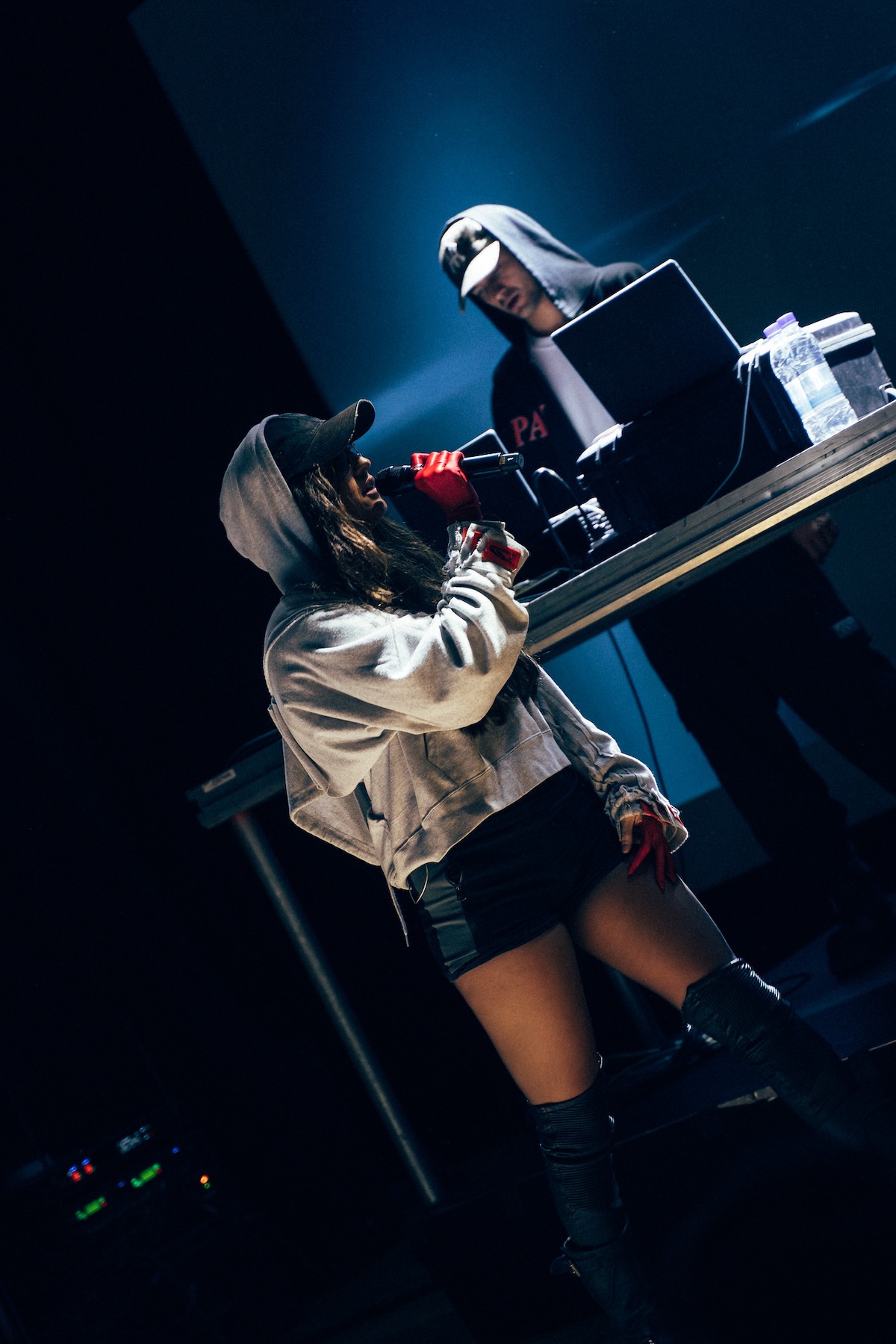
Later that night, Babymorocco plays Kolaport, where the vague scent of shark wafts through the venue. The crowd is deader than it should be for such a fun set. Those of us in the front make a tower of coats within eye shot so we can thrash to the new prince of electropop. He largely plays songs from debut Amour, a high-octane, severely (but not unpleasantly) Autotuned mini-rave for the chronically online. By the second song, his shirt is off and he’s already clambered atop the metal column, low-hanging red jeans in danger of falling to Marky Mark for Calvin Klein levels if he wasn’t consistently grabbing his crotch. It’s all fun and games, but Baby seems almost bored. “I’m quitting music after this; I’ve been touring these songs for a year and have a TV show cooking,” he tells us between songs, muscles rippling in the colored lights. Gotta appreciate the honesty.
Saturday, November 8
The Icelandair notification comes with the tinge of sadness that accompanies any particularly magical trip. By the last day, walking around downtown means running into familiar faces—people I know, festival organizers, the women from the laundromat. It’s not hard to meet people, to be friendly.
I make time to walk the length of the road by the water heading to the last shows of the trip, the new Rosalía in my headphones as I walk to Hallgrimskirkja, a towering Expressionist church whose spire can be seen all over town. My phone buzzes: Rakel has won a big prize, and the press group is waiting for me to take a bus. We visit multi-instrumentalist Ólafur Arnald’s studio, a marvel straight out of Apartamento, wooden floors mixing with industrial metal tubes on the wall.
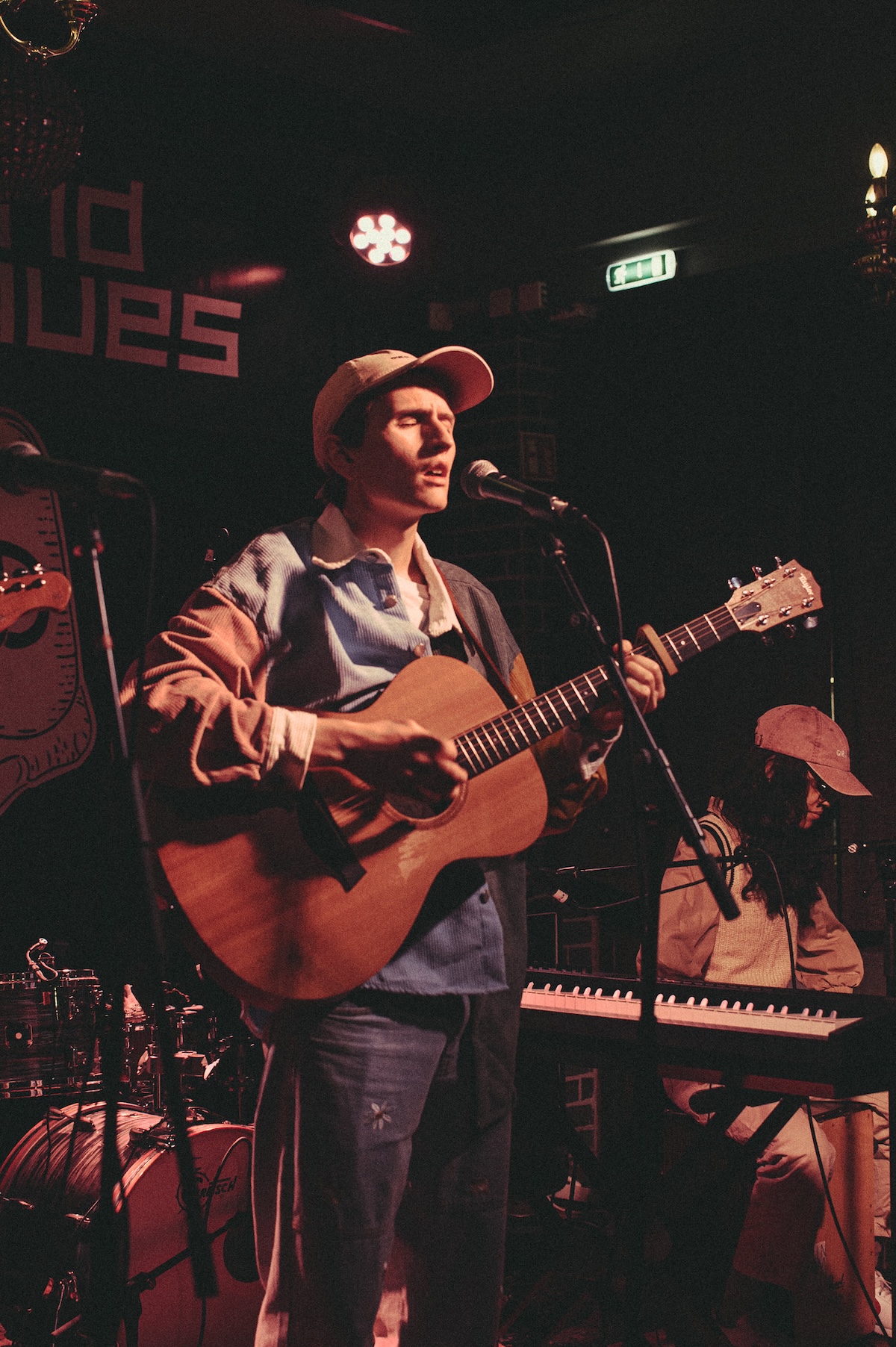
A looming shadow over all the visiting press is trying the hákarl, a fermented shark that Anthony Bourdain called “unspeakably nasty”. Before going into the final goodbye mixer, a music supervisor and his leather jacket-clad friends are trying the shark. I figure it’s my only chance. I remember a local describing it as smelling like “rotten meat soaked in piss for nine years.” Reader, it’s true.
I grab one of the U.K. editors and we head to the last few minutes of the screening of key 1982 punk documentary Rokk í Reykjavík. We catch the end montage of all the bands, including an early tape of Tappi Tíkarrass, young Björk with pin bangs, red-painted cheeks, and a white dress launching a yowl. We head to the Fríkirkjan to see Rakel with a full band. It’s impressive to jump from an intimate living room set to the addition of other musicians, voices ringing through the church like divine intervention.
A small group of us heads to the Reykjavik Art Museum to see Silvana Estrada. Here all the way from Mexico, she plays songs from newly-released Vendrán Suaves Lluvias. Playing with a quartet, voice filling the wide-space, she dedicates the performance to the people of Palestine. “These days it’s easy to feel overwhelmed and sad, but this album is about coming back to the small details of life and trying to protect them,” she says dolefully, cuatro ringing out the modern and yet timeless veracruzana rhythms only she knows how to play.
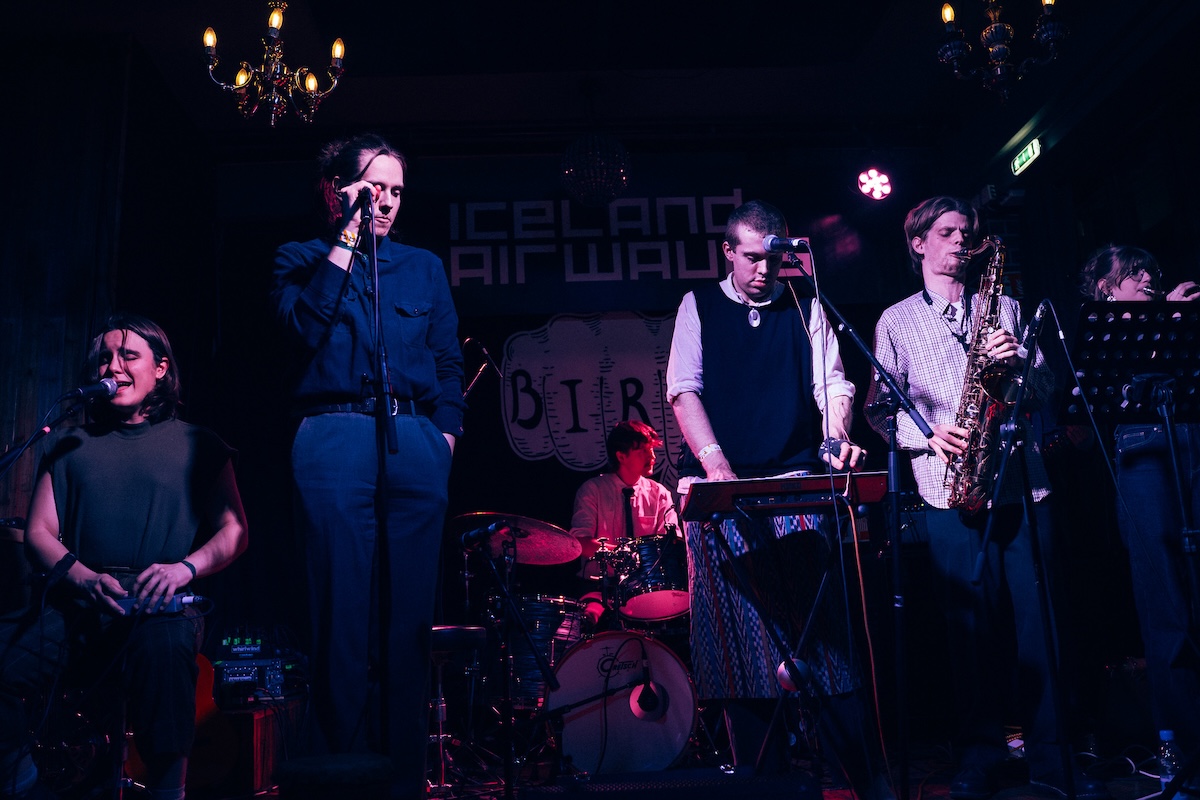
In the cold you’ll do anything to stay warm: have too much vodka with no ice or flirt with the nearest stranger with the intent of cuddling later or moshing with abandon. Iceland Airwaves, with a lineup of largely local talent, understood this well, curating acoustic folk guitar bands and vocalists who were seemingly hanging out with Iceland’s storied elves side-by-side with violent hyperpop from home and abroad, and guitar bands that wouldn’t have felt out of place in the storied Icelandic punk scene of the ’80s. Feeling warmer than ever after Silvana’s set, we head back up Laugavegur—some for one more drink, and others, begrudgingly, to pack.

Leave a comment